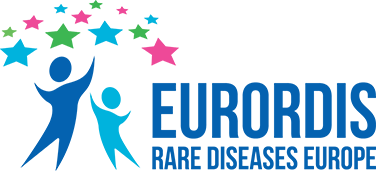
The Voice of Rare Disease
Patients in Europe
From concept to reality: true patient partnership in European Reference Networks
The European Reference Networks (ERNs) for rare diseases, launched by the European Commission in 2017, connect healthcare providers across Europe in virtual networks to provide the best treatment options for people living with a rare disease.
A groundbreaking initiative and an illustration of the value the EU can provide for its citizens, the 24 ERNs connect over 900 healthcare providers from across 26 EU Member States to ensure that expert knowledge travels across borders so patients no longer need to.
Through the ERNs, a doctor can now access existing expert knowledge from another country on a patient’s disease. To review a patient’s diagnosis and treatment, ERN coordinators convene ‘virtual’ advisory panels of medical specialists across different disciplines, using a dedicated IT platform and telemedicine tools.
EURORDIS’ role - amplifying the patient voice in ERNs
EURORDIS played an instrumental role in advocating for the creation of ERNs. To ensure the ERNs serve their primary goal of improving treatment for people living with a rare disease, it is vital that patients are empowered partners in the development and governance of the networks. To this end, EURORDIS also created the European Patient Advocacy Groups (ePAGs) in 2016. Each one of the 24 ePAGs corresponds to one of the 24 ERNs organised by disease grouping.
There are also now over 250 ePAG Advocates actively involved in the 24 ePAGs and connecting the ERNs to the wider rare disease patient community in Europe. The ePAG Advocates participate in Board meetings, as well as cross-cutting and disease-specific working groups for their respective ERN. They bring the collective needs of their patient communities to the table to inform ERN discussions and activities.
Caroline’s story of becoming an ePAG Advocate
Caroline van den Bosch is from the Netherlands. Her son was born with an extreme hemangioma (a vascular tumour) on his chest, upper arm and shoulder. With other parents, she founded HEVAS, the Dutch umbrella patient organisation for vascular anomalies.
Since 2017, Caroline is an ePAG Advocate for the ERN on Rare Multisystemic Vascular Diseases (VASCERN) and co-chair of the Vascular Anomalies (VASCA) Working Group within VASCERN:
“My role is to represent the interests of our patient community in the monthly virtual calls with the VASCA working group and to participate in the monthly EURORDIS calls with other ePAGs active in VASCERN. I try to involve other vascular anomalies patient organisations in Europe to become active in VASCERN and keep them informed on the latest developments relevant to them. I also participate in yearly face-to-face meetings with the VASCA WG and the annual VASCERN seminar.”
She continued, “In the Netherlands, HEVAS and the Dutch Patient Alliance for Rare and Genetic Diseases (VSOP) have started to bring together the Dutch ePAGs so we are able to learn from each other’s experiences and amplify the voice of the patient community in meetings with the Ministry of Health. It is very important to integrate the ERNs into the national healthcare systems in Europe. My personal highlight to date is that I was given the opportunity to speak about the patient perspective in VASCERN during the International Society for the Study of Vascular Anomalies’s workshop in Amsterdam in 2018. This was the first time that a timeslot was given to a non-medical/scientific topic, which proves that the medical world is becoming more open to the patient voice.”
Inés Hernando, EURORDIS ERN and Healthcare Director, said, “The development of ERNs is advancing fast. A call for new members to join existing 24 ERNs will be launched in the coming weeks
and our strategy for patient involvement is effective and growing every day. However, we all agree that there are some important challenges ahead of us to consolidate the ERNs as a knowledge-sharing and care coordination structure.”
She added, “In line with the recent recommendations from the European Court of Auditors, we call on the European Commission and EU Member States to plan for adequate financial support for the future of the ERNs and the ePAGs. This is vital to ensure their success. We also urge Member States to continue working on the integration of ERNs into national healthcare systems, in line with our recommendations and the Board of Member State’s position on the topic. The integration process needs concerted action at national level; clinicians, patient advocates and national health authorities should work together to make this happen”.
The EURORDIS Leadership School - empowering ePAGs
To empower patient advocates in their roles as ePAG patient advocates and equal partners in the ERNs, EURORDIS has created the Leadership School, one of many EURORDIS Open Academy capacity-building programmes.
The Leadership School is a blended online and face-to-face capacity-building programme delivered by expert trainers. It covers a diverse range of topics including: self-awareness on leadership skills, conflict resolution, networks, healthcare pathways, integrated care, digital health, research, and therapeutic development.
The first face-to-face training of the EURORDIS Leadership School will take place 26-27 November 2019 in Barcelona (applications are now closed).
- For more information on the EURORDIS Leadership School contact Raquel Castro, Open Academy Director: raquel.castro@eurordis.org.
- For more information on EURORDIS activities on the ERNs and ePAGs contact Inés Hernando, ERN and Healthcare Director: ines.hernando@eurordis.org.
Eva Bearryman, Communications Manager, EURORDIS






















.png)











No hay comentarios:
Publicar un comentario